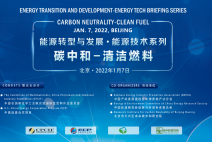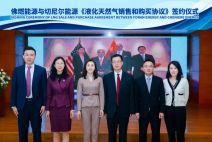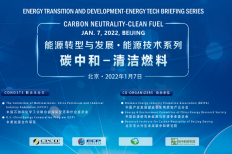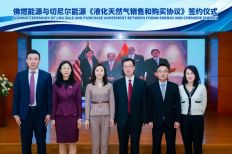In order to better interpret the concepts and policies in the energy storage safety solution, to improve the safety standard framework for energy storage in China and learn the international experience and best practice on the energy storage safety, with the participation and support of the National Academy of Safety Science and Engineering, MEM, the U.S.-China Energy Cooperation Program (ECP) and Beijing Safever Science & Technology Innovation Center, Shanghai Research Institute of Chemical Industry Co., Ltd.and related partners held the first session of Electrochemical Energy Storage Safety Standard Training Workshop online on December 21, 2021. 252 people from Eaton, UL, OSHKOSH, ConocoPhillips, TUV Rhineland, Covestro, Air Liquide and Department of Commerce of Shandong Province, Yunnan Fire rescue Corps, Guangzhou Administration for Market Regulation, Kunshan Development and Reform Commission, IIEM, China National Petroleum Corporation, CHN Energy, China State Construction, Beijing Capital International Airport Co.,Ltd., NANFU, TALESUN,ROHM Semiconductor, Envision signed up for the training.
It is the first session in a series of workshops between ECP and its member companies and partners to launch the Proposal on Safe Production and Emergency Safety Standards in 2021. Under the current dual carbon goal, energy storage is one of the key technologies and an important link in the process of green and low-carbon energy transformation. It plays an important role in ensuring energy security and promoting green energy transformation and plays a key role in the steady implementation of dual carbon goal. The workshop invited several experts from well-known institutions and enterprises at home and abroad to share and analyze in depth the standards of electrochemical energy storage from the perspectives of industry policies, standards, technologies, key points and difficulties in safety, standard construction, and safety risks in the field of energy storage, technology updates, and recent developments in the industry.
ⅠBriefing on the Safety Management Measures for Electrochemical Energy Storage Power Station
Zhou Libo from Standardization Department of China Electricity Council (CEC) shared the compilation process and thinking of the Safety Management Measures for Electrochemical Energy Storage Power Station. She introduced that Electrochemical energy storage has short construction cycle, flexible layout, fast response speed and wide application, which is an important support for the realization of dual carbon goals. The safe development of energy storage industry should be regulated by standard system.The electrochemical energy storage standard system includes 9 professional technical fields, including general planning and design, construction acceptance, safety and environmental protection, etc. There are 150 planning standards in total, and 89 standards have been published. In order to formulate the Safety Management Measures for Electrochemical Energy Storage Power Station, the team has launched a collection of work on the safety management of energy storage power stations, safety accident analysis of electrochemical energy storage power stations at home and abroad, supervision of safety management of domestic projects and project research and other basic work, and actively listened to the opinions and suggestions of relevant agencies, overall adhered to the "safety for development" concept, and put forward targeted requirements according to the typical problems in reality. The next step will be to strengthen the compilation of key standards, involving the safety of energy storage power station, cascade utilization and energy storage grid connection test; to carry out in-depth research on basic issues and to take an active part in international standardization work.
Ⅱ The Role of Storage in California Climate Policies
Ex-Chair Robert B.Weisenmiller presented The Role of Storage in California Climate Policies: Challenges and Opportunities. He introduced the practices and problems in the application and development of energy storage in California. The impact of climate change on California is becoming more and more frequent. To curb greenhouse gas emissions, California has passed a law requiring 100% of its electricity supply to come from renewable and zero-carbon sources by 2045. To do so, California would need to triple the amount of solar and wind power it is generating and increase the rate of battery storage construction sevenfold. Currently, California invests in a variety of energy storage technologies,including short-term, long-term, and seasonal energy storage technologies, lithium-Ion, flow batteries, flywheel systems, thermal energy storage, advanced pumped hydro, and green hydrogen. The challenge now is that as solar power declines after sunset, other sources of clean electricity must work, while addressing battery safety issues. Energy-storage fires in South Korea, Arizona and GM were wake-up calls.
Ⅲ The Impact of Standardson Fire Safety & Energy Storage Systems
Denice Durrant, Standards Engineering Program Manager, gave a speech entitled "The Impact of Standards on Fire Safety & Energy Storage Systems", highlighting the UL Standards Fire Safety Matrix and energy storage system standards. UL has more than 300 fire safety standards covering initiation & indicating devices, fire suppression and fire resistance & construction. In the field of energy storage, there are UL9540 Standard for Energy Storage Systems and Equipment and UL9540A Test Method for Evaluating Thermal Runaway Fire Propagation in Battery Energy Storage Systems. Both standards have become national safety standards in the United States and Canada. UL9540 is a system standard covering electrochemical, chemical, mechanical, and thermal areas. The UL9540A provides four test levels: cell level, module level, unit level, and installation level. In addition, Denice presented other UL research on safety trends in aged li-ion cells and modules, thermal runaway propagation in lithium battery systems, fire suppressants for li-ion battery firesand consumer battery safety.
Ⅳ Energy storage system design and operation control
Shensi She, Expert of EESS(Electrical Engineering Systems & Services) and PDSS (Power Distribution Systems & Services) Division, Eaton APAC, gave a speech entitled"Energy Storage System Design and Operation Control". He shared Eaton's specific practice in energy storage system design and operational control. Energy storage is highly valuable in terms of cost savings and revenue generation, as well as controlling and improving grid resilience. Eaton's applications for energy storage include system integration, seamless islands,black-start, frequency and voltage control, system balancing, renewable energy optimization integration and carbon emission reduction. Eaton also has the corresponding digital twin platform and its system modeling and analysis software. Experts explained the energy storage work by introducing there newable energy smoothing case and the peak cutting valley filling case. For micro-grid control, Eaton has Power Xpert Energy Optimizer control system and SMP Gateway solution. Finally, the controller technology characteristics, micro-grid application technology characteristics, design characteristics, application scenarios and application experience of Eaton energy storage control system are summarized.
Ⅴ Key Factors of EESS Fire Safety Design and Authorization
Qiuping Xiao, chief expert of Shanghai Research Institute of Chemical Industry Co., Ltd., gave a speech entitled "Key Factors of EESS Fire Safety Design and Authorization". He explained the concept and content of electrochemical energy storage system(EESS), standards and certification, safety research of energy storage system, UL energy storage system certification and safety design of energy storage system from the technical level. Xiao Qiuping first explained the concept of EESS and its hazards, and analyzed the fire, explosion and overheating caused by the disorderly release of energy and introduced some behaviors leading to the uncontrolled energy storage system. According to the accident cases of energy storage stations at home and abroad, the protection strategies of EESS are summarized, including prevention and protection. In terms of standards and certification, he also compared the standards of energy storage systems in the United States, EU and China. 'The U.S. has done more research on technical standards, while China has done more on policy making,'he said. In the end, he mainly shared the battery test conducted by Shanghai Research Institute of Chemical Industry Co., Ltd in accordance with ULstandards and related findings, as well as the enlightenment of the test results for certification. Through cell level test, module level test, unit level test and installation level test, they extracted the safety design flow chart of energy storage system, which can be used to evaluate thermal runaway fire transmission and analyze the common components of thermal runaway gas release. Finally, the flow chart, ventilation and inerting design and explosion suppression design of the energy storage system are introduced.
Ⅵ Safety Technology for Energy Storage Battery
Guodao Tong, Professor of Southeast University, gave a speech entitled “Safety Technology for Energy Storage Battery”. He summarized the safety of energy storage system battery,energy storage battery application, battery performance and failure cause analysis, related technical standards, smart battery and safety management platform. His speech began with battery accident cases and safety issues of energy storage power stations, emphasizing the importance of safety issues of energy storage batteries, and then analyzed the performance and failure causes of energy storage batteries, including the characteristics of battery pack chain, failure mechanism of lead-acid batteries, thermal runaway of lithium-ion batteries and the cause of lithium dendrite formation. In terms of technical standards, Professor Tong introduced electrochemical energy storage power station with lithium-ion battery management system specification, design of the chemical industry safety inspection standard and safe operation of enterprises and institutions lead-acid battery technical specification. Finally, he shared the wisdom and management platform, battery safety operations management platform and application experience, and summarized the battery and the direction of the main points of the safety management.
The seminar received positive feedback from all the participating companies and organizations, and they put forward new areas of cooperation and points of interest. Based on the feedback, ECP will continue to share best safety practices and technical solutions with various partners in the sector of hydrogen, fire prevention and urban in 2022. Please contact the ECP team if you would like to be deeply involved in this collaboration ecpgroup@amchamchina.org .









 京公网安备 11010502036951号
京公网安备 11010502036951号